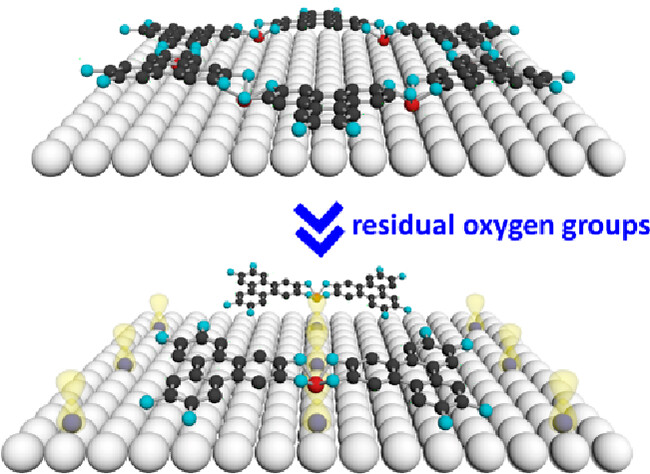Electrosynthesis of Hydrogen Peroxide Enabled by Exceptional Molecular Ni Sites in a Graphene-Supported Nickel Organic Framework
Dongxue Yu1, Peng Zhu2, Chunfeng Hu1, Xiang Huang3, Kangjian Tang1, and Jiong Wang1,4*(王炯)
1Innovation Center for Chemical Science, College of Chemistry, Chemical Engineering and Materials Science, Soochow University, Suzhou215006,China
2Department of Chemistry, Tsinghua University, Beijing100084,China
3Innovation Center for Chemical Science, College of Chemistry, Chemical Engineering and Materials Science, Soochow University, Suzhou 215006, China
4Department of Physics, Southern University of Science and Technology, Shenzhen 518055,China
J. Phys. Chem. Lett. 2023, 14, 49, 10959–10966
Abstract: Electrosynthesis of hydrogen peroxide (H2O2) from 2e- transfer of the oxygen reduction reaction (2e--ORR) is a potential alternative to the traditional anthraquinone process. Two-dimensional (2D) metal-organic frameworks (MOFs) supported by carbon are frequently reported as promising 2e--ORR catalysts. Herein, a graphene-supported 2D MOF of Ni3(2,3,6,7,10,11-hexahydrotriphenylene)2 is synthesized through a common hydrothermal method, which exhibits high 2e--ORR performance. It is discovered that except for emerging MOFs, exceptional molecularly dispersed Ni sites coexist in the synthesis that have the same coordination sphere of the NiO4C4 moiety as the MOF. The molecular Ni sites are more catalytically active. The graphene support contains a suitable amount of residual oxygen groups, leading to the generation of those molecularly dispersed Ni sites. The oxygen groups exhibit a moderate electron-withdrawing effect at the outer sphere of Ni sites to slightly increase their oxidation state. This interaction decreases overpotentials and kinetically improves the selectivity of the 2e- reaction pathway.

链接://pubs.acs.org/doi/10.1021/acs.jpclett.3c02774